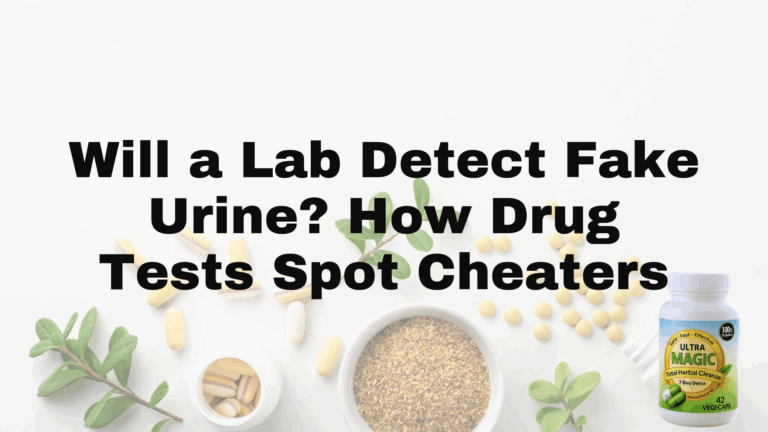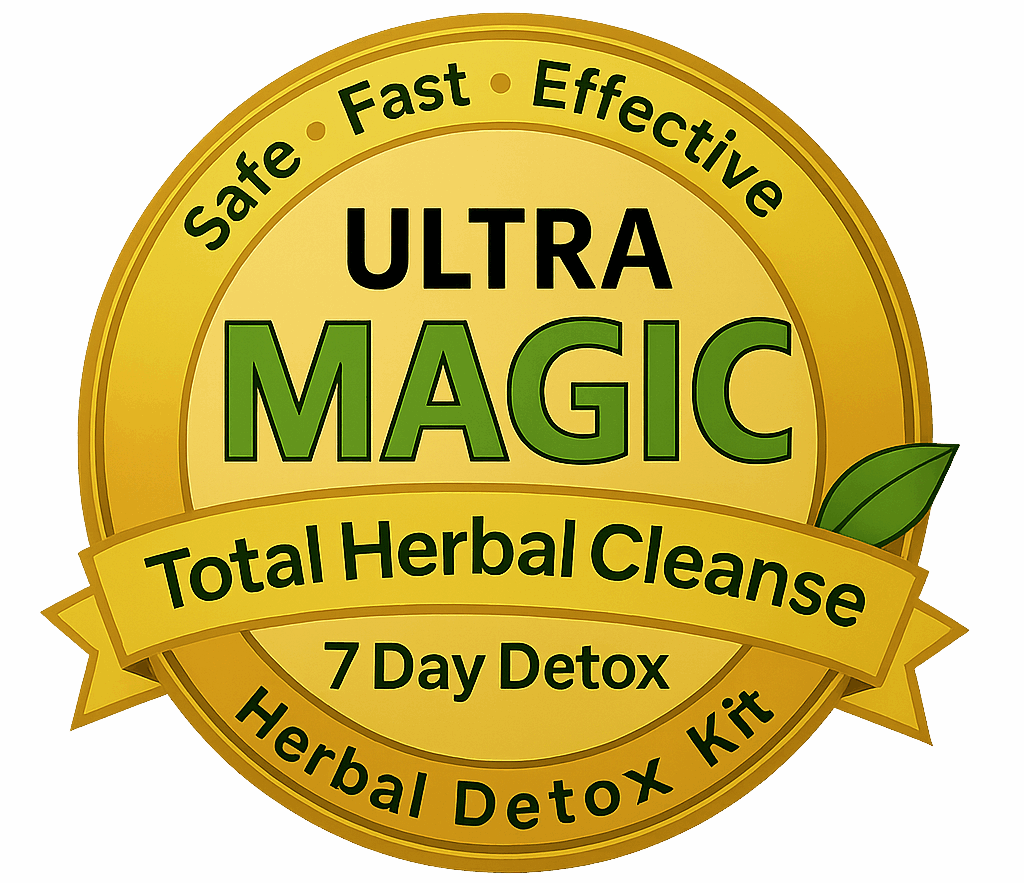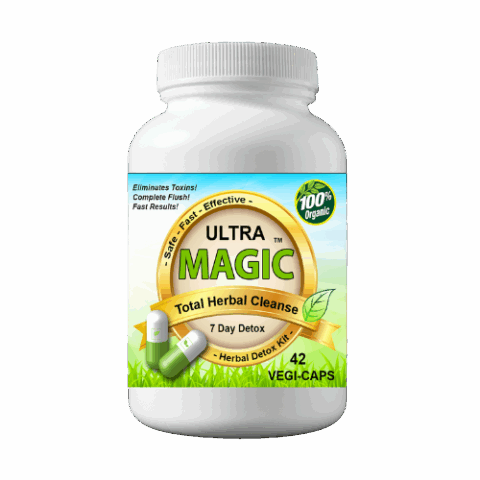
Will a Lab Detect Fake Urine? How Drug Tests Spot Cheaters
Yes—modern laboratories can and do detect fake urine through a battery of physical, chemical, and forensic checks. Specimen-validity testing is now baked into nearly every drug screen, so anything from off-the-shelf synthetic kits to a friend’s frozen sample is flagged long before technicians look for drugs. Temperature strips, creatinine benchmarks, oxidant panels, and even DNA snapshots make the old slip-it-past routine a coin toss at best.
The guide ahead explains why the odds keep shrinking. We trace a sample from restroom to lab bench, outline each validity check, highlight detection rates, and spell out the consequences of getting caught. Along the way, we bust the most persistent myths still circulating on Reddit and reveal the subtle upgrades labs have rolled out for 2025 and beyond. You’ll also learn what goes into synthetic urine, how different testing programs compare, and practical, legal alternatives for a clean result. Read on before you stake your future on a pouch of lukewarm liquid.
The Science Behind Modern Urine Drug Testing
Urine remains the go-to matrix for workplace, clinical, and legal drug screens because it’s cheap to collect, rich in metabolites, and easy to store. Certified laboratories follow a rigid two-step protocol: an immunoassay “quick screen” that flags potential positives, then a high-precision confirmation by gas or liquid chromatography coupled with mass spectrometry (GC-MS or LC-MS/MS). Since 2023, a third layer—specimen-validity testing (SVT)—has become essentially universal, giving labs a dedicated toolkit for spotting tampering before the toxicology team ever checks for drugs. In short, if you’re wondering “will a lab detect fake urine,” the answer is baked into the workflow itself.
How Standard Drug Panels Work
A panel describes the number of drug classes the immunoassay targets:
- 5-panel: THC, cocaine, amphetamines, opioids, PCP
- 10-panel: above plus benzodiazepines, barbiturates, methadone, propoxyphene, methaqualone
- 12-panel and up: may add MDMA, oxycodone, or synthetic cannabinoids
Each assay has a federally set cut-off (e.g., THC ≥ 50 ng/mL). Samples that screen above the threshold are automatically routed to GC-MS or LC-MS/MS, which identifies the exact molecule and its metabolite fingerprint at parts-per-billion accuracy—removing any doubt about false positives. Many 2025 panels also include fentanyl and kratom due to rising misuse, while some insurers fund “expanded opioid” arrays that pick up buprenorphine and tramadol.
Specimen Validity Testing: The Anti-Cheat Layer
SVT evaluates whether the fluid in the cup is authentic human urine, chemically unadulterated, and physiologically plausible. Technicians measure creatinine, specific gravity, pH, uric acid, and run quick screens for oxidants, nitrites, and glutaraldehyde. Results are classified as:
- Dilute – Looks like urine but overly watered down
- Substituted – Not consistent with any human urine profile
- Adulterated – Contains a foreign substance meant to mask drugs
Typical red-flag ranges are shown below.
| Metric | Normal Range | Flagged as Tampered When… |
|---|---|---|
| Temperature (°F) | 90–100 | <90 or >100 after 4 min |
| Creatinine (mg/dL) | 20–300 | <20 (dilute/substituted) |
| Specific Gravity | 1.003–1.030 | <1.003 or >1.030 |
| pH | 4.5–8.5 | <3 or >11 |
If any metric falls outside these limits, the lab may report “Specimen Invalid” or “Refusal to Test,” which regulators treat the same as a confirmed positive.
Chain of Custody: From Bathroom to Bench
Accuracy hinges on airtight documentation. The collector logs ID, seals the cup with tamper-evident tape, and notes the temperature within four minutes. Many programs require a same-gender observer or direct-line-of-sight to curb substitution attempts. The sample, locked in a bio-bag with a barcode, travels to the lab under electronic Custody and Control Forms (eCCF). Every handoff is scanned, time-stamped, and archived, so any anomaly—missing seal, torn label, or late arrival—triggers an automatic investigation. Together, these steps close nearly every loophole before the chemists even power up their instruments.
What Exactly Is Fake Urine—and Why People Use It
“Fake urine” is an umbrella term that covers any tactic meant to slide a drug-free liquid through a urine panel without raising an eyebrow. Sometimes the product is a lab-made formula sold online, sometimes it’s a buddy’s clean sample stashed in a hand warmer, and sometimes it’s just your own urine watered down with a last-minute “detox” drink. The common goal is identical: dodge detection long enough to keep a job, satisfy a probation officer, qualify for insurance, or hold on to a college athletic scholarship.
Motivation, not science, drives most purchases. Marketing copy promises “100 % undetectable” results, but as we’ve already seen, today’s specimen-validity testing is designed precisely to answer the question “will a lab detect fake urine?”—and it usually does. Understanding what’s inside these products (and their weak spots) helps explain why the success rate is plummeting.
Inside Synthetic Urine Kits: Formulas, Add-Ins, Heating Elements
Commercial kits aim to reproduce the look and chemistry of fresh urine. A typical bottle contains:
- Distilled water
- Urea and uric acid for smell and crystal formation
- Creatinine to mimic kidney by-product levels
- Food-grade coloring for the straw-yellow hue
- Preservatives and biocides to extend shelf life
To fool the onsite collector, most kits include disposable heat pads, temperature strips, and sometimes a belt-mounted pouch or squeeze valve. High-end versions even add small amounts of foaming agents so a quick “shake test” forms bubbles like real urine. The problem? Labs now measure dozens of trace markers—cortisol, amino acids, even skin micro-flora DNA—that no off-the-shelf mix can replicate consistently. One bad reading on specific gravity or uric-acid isomer ratio and the sample is flagged as “substituted.”
Real Urine Substitution: Borrowed Samples & Concealment Gadgets
Some people skip the chemistry set and smuggle in someone else’s urine, often frozen in advance or collected minutes before the test. Popular delivery devices include the Whizzinator, rubber prosthetics, and gravity-fed tubing hidden under clothing. Pulling this off requires you to:
- Keep the fluid between 90–100 °F for the hand-off window
- Match biological variables—gender hormones, pregnancy markers, even disease antibodies
- Prevent bacterial overgrowth that skews pH and odor after only a few hours
- Avoid DNA mismatches if the lab escalates to genetic confirmation
Miss one detail and the chain-of-custody paperwork morphs into a misconduct report.
Chemical Adulterants and Dilution Drinks
When swapping seems risky, users turn to chemistry. Household oxidizers such as bleach, iodine, or pyridinium chlorochromate oxidize drug metabolites, while additives like glutaraldehyde scramble the immunoassay antibodies. “Detox” or “flush” drinks take a different tack: flood the body with water and B-vitamins so the sample looks yellow but contains fewer metabolites. Both strategies leave fingerprints that SVT zeroes in on:
- Creatinine below 20 mg/dL → reported as “dilute”
- Specific gravity under 1.003 → potential substitution
- Positive oxidant strip → “adulterated”
Retail products like Klear, Urine Luck, and QCarbo have been repeatedly cited in lab bulletins for producing these tell-tale anomalies. In short, modern validity testing catches the cheat long before the drug screen even loads onto the mass spectrometer.
Lab Techniques That Unmask Synthetic or Altered Samples
The minute your sample is scanned into the accessioning room, the race to answer “will a lab detect fake urine” has effectively already been won. Before any cannabinoid or opioid screen fires, technicians run a gauntlet of validity checks designed to expose physical oddities, off-spec chemistry, foreign biocides, and even missing DNA. Most of these steps are automated on high-throughput lines, so a single red flag—temperature a hair low, creatinine flat, peroxide trace—triggers a “specimen invalid” code and the analysis stops there. Here’s how that layered defense works in 2025.
Basic Physical Checks: Temperature, Color, Foam, Odor
Collectors jot the cup’s temperature within four minutes; anything outside 90–100 °F is instant cause for rejection. At the lab, techs verify the reading and give the sample a quick visual once-over against a standardized color chart. Real urine is pale to amber, slightly cloudy, and when swirled produces a micro-foam head that lingers a second or two thanks to natural proteins. Most water-based synthetics stay crystal-clear and fall flat in the “shake test.” A musty or bleach-like odor is another giveaway that the donor tried chemical adulterants.
Chemical Benchmarks: Creatinine, Specific Gravity, pH, Uric Acid
Next, an automated analyzer pulls a tiny aliquot and runs it through photometric and ion-selective probes. Values that sit outside normal human biology scream substitution or heavy dilution.
| Marker | Expected Range | Auto-Flagged At | What It Suggests |
|---|---|---|---|
| Creatinine (mg/dL) | 20 – 300 | < 20 or > 300 | Diluted or spiked sample |
| Specific Gravity | 1.003 – 1.030 | < 1.003 or > 1.030 | Watered down or adulterated |
| pH | 4.5 – 8.5 | < 3 or > 11 | Acid/Base tampering |
| Uric Acid (mg/dL) | 1 – 4 | < 0.5 or > 10 | Synthetic formulation |
Because most kit makers copy only creatinine, the secondary markers—uric-acid isomer ratio, chloride, even cortisol—snag them.
Biocide and Oxidant Screens
Labs learned fast that cheaters favor bleach, nitrites, glutaraldehyde, or pyridinium chlorochromate to burn up drug metabolites. Modern SVT plates contain colorimetric wells that shift hue if oxidants top parts-per-million thresholds. Suspect hits are re-run via gas chromatography to confirm the exact adulterant. Even trace residues from “lab-grade” fake urine preservatives light up these strips, which is why many once-popular brands no longer brag about being “undetectable.”
High-Resolution Mass Spectrometry & DNA Profiling
If a high-stakes sample (DOT, court order, Olympic panel) still looks odd yet passes the basics, the lab escalates. Ultra-high-resolution LC-MS can hunt for telltale voids—no endogenous steroid metabolites, missing amino-acid spectrum—or spot polyethylene glycol fragments common to synthetics. When legal consequences loom, forensic labs may run short tandem repeat (STR) analysis on epithelial cells naturally shed into real urine. A mismatch against the donor’s buccal swab is classified as “substituted,” treated the same as a positive drug result, and often forwarded to law enforcement. Layer by layer, the technology leaves almost no wiggle room for fake urine to survive the gauntlet.
Can You Beat the System? Detection Rates and Emerging Tech
Success stories about sneaking synthetic urine through a lab have become urban-legend rarities. Department of Transportation (DOT) auditors say fewer than 2 % of tampering attempts escape specimen-validity testing, and private lab numbers are sliding the same direction. As hardware prices fall and automation scales up, the gap between “budget” and “premium” testing is closing fast. Before you gamble, know exactly what you’re up against.
Employer vs. DOT-Certified vs. Court-Ordered Testing
- DOT Programs — Federally mandated, they must run SVT on every sample, keep split specimens, and follow rigid, often observed, collection rules. A failed validity check is recorded as a “refusal to test,” identical to a hot positive.
- Corporate Panels — Large employers typically contract the same certified labs used by DOT, though some small firms still spring for cheaper, immunoassay-only screens; those outliers are disappearing as liability concerns rise.
- Court or Probation Screens — Budgets vary, but when incarceration is on the line, judges green-light everything from direct observation to DNA confirmation. Attempted substitution usually adds an extra charge to the rap sheet.
Latest 2025 Upgrades: Automation, AI Pattern Recognition
High-throughput robots now cap, aliquot, and barcode 1,200 cups per hour with zero human handling, slashing the window for manual error. Machine-learning models compare creatinine-gravity-pH triangles across millions of historical samples; if yours sits outside the 99.7 % confidence ellipse, it’s flagged for forensic review. Pilot programs are also testing handheld Raman spectrometers at collection sites to verify “is this fluid even urine?” before it ships.
Variables That Influence Success or Failure
- Lab sophistication and budget
- Collector vigilance and direct observation policies
- Temperature control during the four-minute window
- Shipping time (overnight ice packs vs. local walk-in)
- User error—wrong ratio, noisy heating pad, lingering bleach odor
- Constantly updated reagent strips that outpace old Reddit “recipes”
Bottom line: the detection net tightens every quarter, making the question will a lab detect fake urine less hypothetical—and more rhetorical—than ever.
Penalties When Fake Urine Is Detected
Failing a drug test is bad; getting caught trying to fake one is worse. The moment a lab tags your sample as adulterated, substituted, or refusal to test, the result is recorded exactly the same as a positive—but with extra baggage. Below are the three arenas where the backlash hits hardest.
Employment Fallout: Job Offers, Termination, Blacklists
- Pre-employment: the offer is rescinded on the spot, and many HR teams note “tampering” in applicant-tracking systems that feed HireRight and similar databases.
- Current employees: most companies classify a substituted specimen as gross misconduct—grounds for immediate termination without severance. Safety-sensitive roles regulated by the DOT also trigger a mandatory Substance Abuse Professional (SAP) evaluation before you can even re-apply elsewhere.
- Industry blacklists: transportation, healthcare, and energy employers often share disqualification lists, so one stunt can quietly follow you for years.
Legal and Probation Consequences by State
A growing number of states—Mississippi, Texas, Arkansas, North Carolina, and Indiana, to name five—treat possession or use of synthetic urine during a test as a misdemeanor; fines run $500–$1,000 plus court costs. If you’re on probation or parole, a tampered screen is logged as a violation, which can add months to supervision or land you back in custody. Courts may also impose random, observed testing at your expense.
What Happens Next: Observed Retests and Reporting
Once a lab flags your sample, the collector initiates a directly-observed recollection: same-gender staff watch the urine leave your body, eliminating any chance of substitution. For DOT drivers, the incident is uploaded to the FMCSA Clearinghouse within 24 hours, visible to every future employer. Non-DOT labs forward adulteration reports to hiring managers, probation officers, or athletic commissions, closing the loop on any second chances.
Better Paths Than Cheating: Legitimate Detox and Disclosure
If you’re staring down a test date, remember that switching samples isn’t your only option—in fact, it’s the riskiest one. Giving your body time to metabolize drugs, supporting that process with smart lifestyle choices, and being transparent about legitimate prescriptions can all deliver a clean result without the career-ending fallout. The strategies below aren’t magic bullets, but they do stack the odds in your favor and keep you on the right side of the law.
Allowing Natural Clearance Time—Drug Metabolite Half-Lives
Every substance has a biological half-life—the time it takes for blood or urine levels to drop by 50 %. Multiply that figure by five and you get a rough “full clearance” window.
| Drug Class | Typical Urine Detectability* |
|---|---|
| THC (occasional) | 3–5 days |
| THC (daily use) | 15–30 days |
| Cocaine | 1–3 days |
| Oxycodone | 2–4 days |
| Benzodiazepines (long-acting) | 10–21 days |
*Individual factors—body-fat %, hydration, age—can stretch or shrink these ranges.
Evidence-Based Detoxification Approaches (Diet, Hydration, Exercise)
- Hydrate sensibly: 2–3 L of water spread through the day keeps kidneys flushing without triggering a “dilute” flag.
- Nutrient-dense meals: fiber, cruciferous veggies, and citrus support hepatic Phase II conjugation.
- Moderate cardio: 30 minutes of brisk walking or cycling accelerates metabolism and sweat-based excretion.
- Quality sleep: seven hours or more boosts growth hormone release, which in turn aids tissue repair and toxin processing.
Doctor’s Notes & Prescription Exemptions
If you’re prescribed amphetamines for ADHD or opioids post-surgery, list them on Step 5 of the Custody & Control Form and bring the bottle or a letter. Medical Review Officers (MROs) will verify the script and reclassify an apparent positive as “negative with prescription,” protecting you from HR or legal backlash. Honesty, in this case, really is the best detox plan.
Quick Answers to Common Questions
Need the short version? The Q&As below tackle the top People-Also-Ask items so you can decide—quickly—whether it’s worth risking a fake sample (spoiler: it isn’t).
Can a Lab Tell If Urine Is From Someone Else?
Yes. Routine SVT already checks gender-linked hormones like hCG and estrone; if stakes are high, forensic labs run STR-DNA profiling that matches the sample to the donor with ≥ 99.9 % certainty. A mismatch equals an automatic “substituted” report.
Will LabCorp, Quest, and Other Big Labs Detect Synthetic Urine?
Almost certainly. Both giants perform mandatory SVT on every intake, maintain oxidant strips calibrated to spot commercial biocides, and publicly state that detecting synthetic urine is “standard practice.” In other words, will a lab detect fake urine there? Count on it.
Is a 5-Panel Test Different From a 10-Panel in Spotting Fake Urine?
No. Panel size only changes which drugs the immunoassay screens for. Specimen-validity testing—temperature, creatinine, specific gravity, oxidants—remains identical whether you order a basic 5-panel or an expanded 10- or 12-panel.
Does Synthetic Urine Ever Work Anymore?
Success stories are now unicorn-rare. A low-budget, unobserved clinic might miss a flaw, but industry data put the escape rate below 2 %. With AI-driven analyzers rolling out, those odds shrink further every quarter.
Key Takeaways Before Your Test
- Modern specimen-validity testing makes the question “will a lab detect fake urine?” largely rhetorical—most samples are flagged before the drug panel even runs.
- Labs cross-check temperature, creatinine, gravity, pH, oxidants, and sometimes DNA; miss any one target and your cup is stamped adulterated or substituted.
- Detection rates hover above 98 %, and the penalties—lost job offers, DOT “refusal to test,” or even criminal charges—can haunt you for years.
- Cheating methods that once worked (synthetic blends, donor urine, flush drinks) are now outpaced by AI-driven analytics and stricter chain-of-custody rules.
- Safer alternatives exist: allow enough clearance time, support your body with smart nutrition and hydration, and disclose legitimate prescriptions up front.
Need to detox the legal way on a tight timeline? Consider a clinically tested herbal cleanse like Ultra Magic Detox™, available through Magic Detox™—and leave the fake pee on the shelf.



